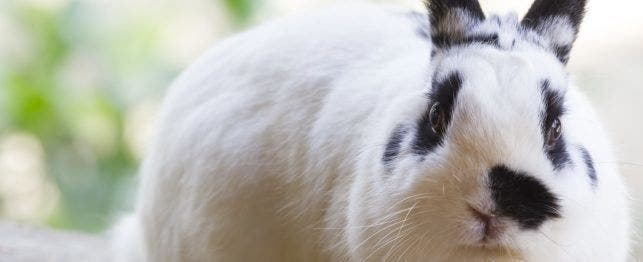
Rabbit Senses: What Is It Like in Their World?
Remember Bugs Bunny? He was a perceptive little critter. As a rabbit, he was equipped with acute senses that allowed him to locate and escape from predators like Elmer Fudd. With superior hearing, smelling, and far-off vision, Bugs always came out on top.
Vision
A rabbit spends his days eating, sleeping and staying away from creatures looking for a tasty lunch. For this reason, bunnies may not be able to focus as well as people, but they can pick up any movement and make a hasty retreat.
A rabbit’s field of vision is immense. He has large eyes that are located on the sides and upper part of the head, enabling each eye to see more than one half of a circle. Together, they can see in every direction. Therefore, a rabbit can see an approaching predator and be on the lookout for an escape route simultaneously.
Despite their large field of vision, rabbits have reduced depth perception as well as a limited degree of close-up vision. If you think about it, rabbits don’t need to know exactly what is coming at them. Any sudden movement will elicit flight. Even though their close-up vision is not the best, rabbit eyes are designed to see moving objects far in the distance. This allows them to see a predator approaching at a great distance, and gives them ample time to run away. Most rabbits won’t hang around to fight.
Intense light blinds a rabbit, as he has restricted contraction of his pupils. Rabbits have limited color perception, although it is widely thought that they can distinguish between red and green. Sunset is the optimal time of day for a rabbit to see.
Hearing
Hearing is a rabbit’s most vital sense, hence the large upright ears. The auditory system is used to detect predators, as well as to help a rabbit perceive the area around him. Acoustics help to overcome the reduced visual abilities by allowing the rabbit to navigate without difficulty. Sound waves bounce off objects, allowing the rabbit to recognize the arrangement of his surroundings.
Most rabbits have large, erect ears. When alert, the ears move forward and backward as they attempt to pinpoint the danger. When the rabbit is relaxed, the ears lie along his back, but they are quite responsive to noise. The slightest sound can be detected from very far away. A rabbit’s sense of sound is vastly developed, far more finely tuned than his vision.
Lop-eared rabbits also have good hearing but do not do as well in the wild as rabbits with erect ears.
Smell
Rabbits have 100 million scent cells, making for a very keen sense of smell, which they use to identify other rabbits and animals. The nasal membrane is very sensitive to perfumes, chemicals and dust, and these agents can cause upper respiratory problems for the rabbit.
The rabbit’s sense of smell is far more developed than that of the human. Moveable folds inside the rabbit’s nose assist in the detection of scent. The sense of smell in a rabbit is present at birth, allowing a newborn to find his mother’s teat. Rabbits shift their noses up and down when trying to identify a scent; this is called “nose blinking.”
Taste
The rabbit has 17,000 taste buds situated in the mouth and pharynx. They can distinguish between sweet, sour, bitter and salty. In the wild, rabbits can also differentiate between toxic and non-toxic plants. Some house rabbits lose this ability, making it important for people with pet rabbits to research this subject.
Some pet rabbits have discriminating tastes, and because of this can be picky. They seem to tolerate bitter greens, such as dandelion, much more than humans, but they also enjoy chocolate and other sweets. However, these items often cause gastric upset and should be avoided.
Touch
Like cats, rabbits have whiskers that are as long as the body is wide. These help in measuring the girth of openings and passages in the dark. The whiskers are located on the mouth, nose, and cheeks and above the eyes. There are sensory nerves located at the follicle end of each whisker, enabling delicate awareness of orientation.
The entire body has nerve endings that are sensitive to touch. Rabbits enjoy being petted, but it is important to move slowly. Remember, they can’t see very well up close. Never approach a rabbit from the back, as this is reminiscent of being attacked by a predator.